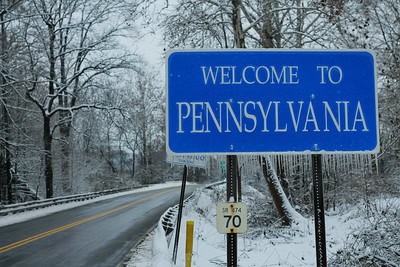Pennsylvania
Pennsylvania’s diverse landscape, cities, and nature parks make it one of the best destinations in the region. While moderately sized, it did not stop Pennsylvania from offering some of the most diverse landscapes in the region –– having five major geographic regions. Know more about the state of Pennsylvania here.
Geography
Pennsylvania is located in the Mid-Atlantic, Northeastern, and Appalachian parts of the United States. Practically landlocked, it is bordered by numerous states from all sides. Namely: Delaware, Maryland, West Virginia, New York, and New Jersey. Its northwest corner is also bordered by Ontario, Canada.
While moderately sized, Pennsylvania still manages to have diverse geography and topography. The state of Pennsylvania is typically categorized into five major regions. Namely, the Allegheny Plateau, Ridge and Valley, Atlantic Coastal Plain, Piedmont, and the Erie Plain.
These regions vary from coastal to mountainous. The Allegheny Plateau, in particular, is a combination of valleys, hills, and high points that is generally described as ‘rugged terrain’. On the flipside, Atlantic Coastal Plain is comprised mainly of rivers, marsh, and swamplands. This diversity makes Philadelphia an exciting outdoor destination.
History
Like many other states and areas in the country, Pennsylvania was inhabited by various indigenous groups for thousands of years. All prior to the arrival of the Europeans. The Dutch and the English were the first to take utmost interest in the region of Pennsylvania.
The state name ‘Pennsylvania’ was named Governor William Penn. It comes from two Greek words: ‘phileo’ and ‘adelphos’. The combination wanted to convey ‘the land of brotherly love’.
Interestingly, the state of Pennsylvania is one of the first states to be part of the United States of America. It is among the first thirteen states, hence why it is historically considered a founding state. In fact, the capital of the whole country was in Philadelphia until the 1970s when it was decidedly transferred to Washington D.C. Still, it remains to be considered the nation’s birthplace and of great significance to the history of the country.
Weather
With its diverse geography, Pennsylvania naturally has quite a diverse climate as well. In general, Pennsylvania experiences cold winters and humid summers. It straddles two major climate zones which fit Pennsylvania into two: humid continental and humid subtropical.
As a rule of thumb, as you move closer to the mountainous region of Pennsylvania, the weather becomes colder with higher chances of rain and greater amounts of snowfall. Consequently, as you move farther, it becomes much warmer with higher humidity.
Tourism
In Pennsylvania, you get to enjoy the city, some beach, and the great outdoors all in one day. Some of the must-visits are Presque Isle State Park, Philadelphia Museum of Art, and Gettysburg National Military Park.
Key information about Pennsylvania
📍 Area: 119,283 km2
👥 Population: 13,011,844
🏛️ Capital: Harrisburg
🏢 Major cities: Philadelphia, Pittsburg, Allentown, Erie
🔢 Number of counties: 67
📋 Postal Abbreviation: PA
📖 Primary language/s: English
📌 Nearby states: New York, New Jersey, Delaware, Maryland, West Virginia, Ohio






